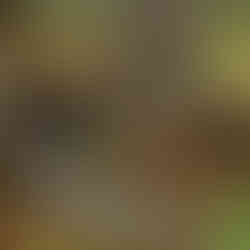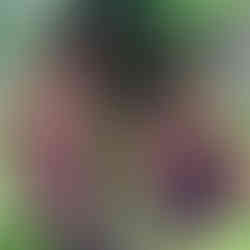Fairy and Gnome Collaboration: Learning through Play
- Vicky Moore

- Apr 8, 2019
- 5 min read
Updated: May 3, 2019
May you experience each day as a sacred gift woven around the heart of wonder.
- John O'Donohue
Too often adults dismiss fairy and gnome magic as sweet yet unimportant. As though a pre-made worksheet is more educational, because it mirrors the adult world, forgetting that our learners are indeed children. And to harness children's learning best we must not only value their whimsical wonder, yet partner with their sense of delight, awe, and imaginative play.
Constructing fairy and gnome dwellings encourages children to observe the wonders of nature right there in front of them and to actively problem solve how to best interact with their own environment. And yes, the academic connections are there, in abundance. Through fairy house building you can dive into writing, reading, weather reporting, engineering, plant identification, watershed studies, estimating, graphing, counting, and most of all, all while creating a wondrous, passionate, joyously invested project based learning community. Your learners will beg for opportunities to measure the water table in the fairy community, and will rush to write a reply to a letter from their gnome. Below is a summarized list of some of my favorite learning activities from 15 plus years of integrating concrete academic standards into early childhood fairy delight.
Writing: Writing letters to the fairies/gnomes (ongoing: teacher/parent writes back), writing short stories about the fairy and gnomes, writing lists of materials needed to build the structures, writing about how the weather impacts life within the village, writing about how the fairies and gnomes celebrate birthdays or holidays etc... writing is as developmentally appropriate within early childhood ranging from adult dictation, picture writing with adult dictation, building towards letter formation, finger spaces, invented spelling, partner writing, and independent writing with reviewing guidance.
Reading: Reading the letters the fairies and gnomes write back (parent/teacher writes on behalf of the village), engaging in emergent research learning about the types of flora within each season, how these could be used as building materials or possible food, learning about simple building techniques ... folklore - reading and being read to about fairies and gnomes in different cultures, comparing and contrasting fairy stories, engaging in a character study regarding famous fairies such as the Tooth Fairy and Thumbalina .... as with writing within this development span, reading is as appropriate per learner; however, read alouds enrich any unit, the act of being read to, even if the youngster can read, exposes children to sentence structure and vocabulary beyond their reading level, as well as reminds them daily, that the act of reading is a joyous, wonderful, activity, at times alone, other times together.
Math: Recording and graphing the weather by the fairy village, estimating and then counting the number of building materials required, was their counted number higher or lower than their estimation, by how many, similarly estimating the size and then measuring their fairy and gnome dwellings, simple word problems - for example: if there are 5 fairies over here, and they each will eat 4 blueberries at the celebration, how many blueberries will we need to provide? Repairing one roof requires two large pieces of bark, if we are repairing three roofs, how many pieces of bark will we need? There were seven fairy chairs before the wind knocked three down, how many are there now? Expanding upon complexity as the youngsters are ready.
Science: Local Plant Identification, Weather, Seasons, Animal life in your area during the day, what happens at night, how the weather, time of day, and seasons impact the local animals, how they impact how we live, how might that activity impact the fairies?
Stewardship: How we care for a place, without asking young children to save the earth before they have a chance to love it - stewardship at this age is as simple and wonderful as just that, caring for a place - shoveling little paths in the snow, picking up any trash or litter here, and perhaps on a field trip or with their families, repairing the village after a heavy rain, planting flowers and trees for the birds, butterflies, bees, and fairies ... creating a sense of ownership and understanding how their actions can impact a place
Aside from traditional learning, the precision required to build these little homes encourages focus and fine motor development. Activities such as scooping, pinching, threading, weaving, and tying are inherently a part of the creative self-directed construction, and as the children’s skills are refined, so are the finished products that they create.
The fairy village is folklore at its finest, and yet is more reminiscent of the "real world," than we credit it with. This is a shared world, an interactive land full of cause and effect, trial and error, and ongoing conflict resolution. The children must negotiate the space with the ever changing environment as well as each other, developing flexibility, empathy, communication skills, and a balanced persistence: understanding when to let go of an idea, when to revisit and seek guidance with an idea, and when to simply not give up, and try, try again - all qualities successful adults work with daily.
The simple joy derived from creating and learning through magical experiences is perhaps anchored in this knowing that anything is possible within the gnome and fairy realm. Young children believe because the act of believing is exciting, liberating, and offers enormous opportunity for ones whose day to day life is largely directed by adult reasoning. This is the children's domain, and in many ways, that ownership is the most magical element. Within their creative mini world, lies a place where the youngsters themselves decide whats for dinner, the chores to be done, and when the little ones, smaller than they themselves, must be off to bed.
What if some simply don't believe? In my experience that has yet to stop them from jumping in with both feet. For, as they encounter something so playful and full of opportunity, it's no longer about it being real or not. It's the joy from being invited to fully participate within their imaginative world which takes over. It is the shared journey, the tiny discoveries, and the potential of the unknown that lie at the heart of this experience and make it so compelling.
Although you can buy kits or charming accessories for miniature world building, so much of the benefit within building these begins with children collecting found natural materials. If the main parts are already provided there isn't as much challenge or discourse for the children to engage with. Through modeling open ended construction rather than using pre-made kits, you are teaching the children to carefully observe their world, with all their senses, viewing this patch of moss one way, and this acorn top another. In guiding any age learner I'm always reminded that a moment comes when my role is to know when to get out of the way, that their development is far more about their ideas being brought forth, than mine. You too will find that moment, when the children are focused, they have purpose, and they are absolutely full of joy. In this moment the possibilities are endless, and our job is to allow it happen.
For a list of our favorite Picture Book Companions on fairies and gnomes click here.

























Comments